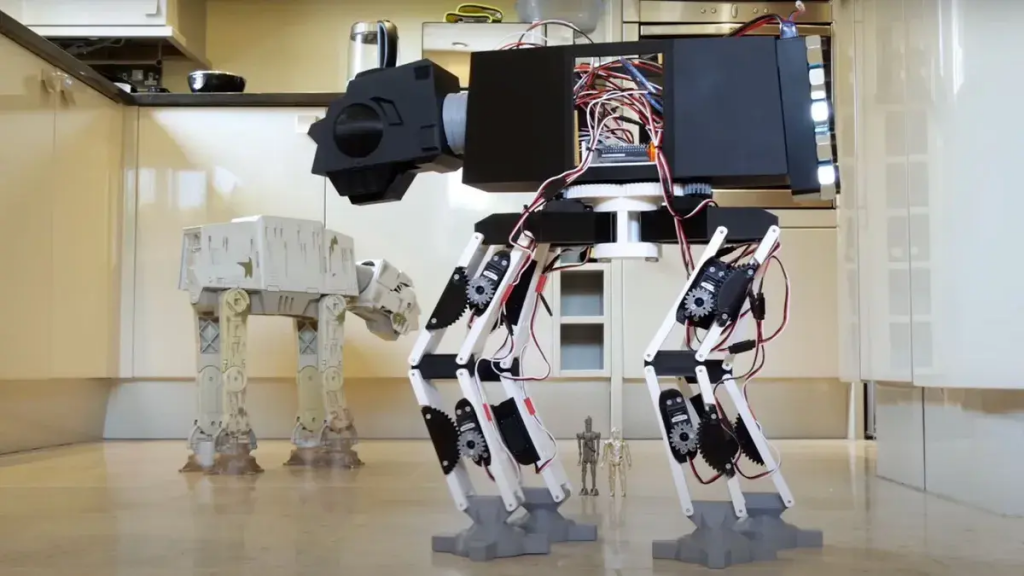Imagine witnessing the iconic All Terrain Armored Transport (AT-AT) from the Star Wars trilogy strolling majestically through the streets. While it may seem like an enchanting dream, mechanical engineer James Burton has transformed this fantasy into reality.
Inspired by the immensely popular AT-AT toys from the original movies, Burton embarked on a mission to create a remarkable walking version that would captivate the imagination of Star Wars fans and enthusiasts alike.
The journey to engineer a functional AT-AT robot was not without its challenges. Many toy replicas attempted to emulate the AT-AT’s grandeur but fell short regarding the crucial element of walking independently. The AT-AT’s imposing stature and elongated legs posed a significant obstacle, rendering these replicas perpetually teetering on the brink of collapse.

However, James Burton, a mechanical mastermind, refused to accept defeat. Drawing from his expertise as a former toy designer and mechanical engineer, Burton embarked on an ambitious endeavor to create a four-legged walking robot that mirrored the captivating presence of the AT-AT.
Through a meticulous process of reconstruction and innovation, Burton breathed life into the AT-AT toy, bestowing upon it the ability to move with an awe-inspiring gait. Utilizing cutting-edge 3D printing technology, he carefully modified the original design, transforming it into a fully-functional marvel of engineering. Each leg was equipped with three servo motors, a symphony of mechanical precision that orchestrated the robot’s graceful stride.

To control this remarkable creation, Burton implemented an Arduino Mega 2560 board as the central nervous system. Communicating seamlessly with the servo motors, the board effortlessly interpreted commands received via a DSM radio receiver, allowing for effortless control and maneuverability.
While Burton’s version may not be an exact replica of the towering AT-AT seen on the silver screen, its ability to walk defied expectations and astounded enthusiasts. With its uncanny resemblance and remarkable stability, this robotic marvel ignited the imagination, reigniting the magic of Star Wars for fans of all ages.
Burton’s dedication to the Star Wars fandom extended beyond his own achievement. In a gesture of generosity, he shared invaluable resources, including Computer-Aided Design (CAD) files and accompanying code, on GitHub. This act of goodwill ensured that aspiring builders and fellow enthusiasts could embark on their own journey to bring the AT-AT to life, forging a community united by their passion for technology and the Star Wars universe.
In the realm of robotics, dreams have the power to transcend the boundaries of fiction. James Burton’s walking AT-AT robot stands as a testament to the limitless possibilities when imagination and engineering converge.
As we witness this awe-inspiring creation roam, we are reminded that with dedication and perseverance, even the grandest dreams can become a tangible reality.


